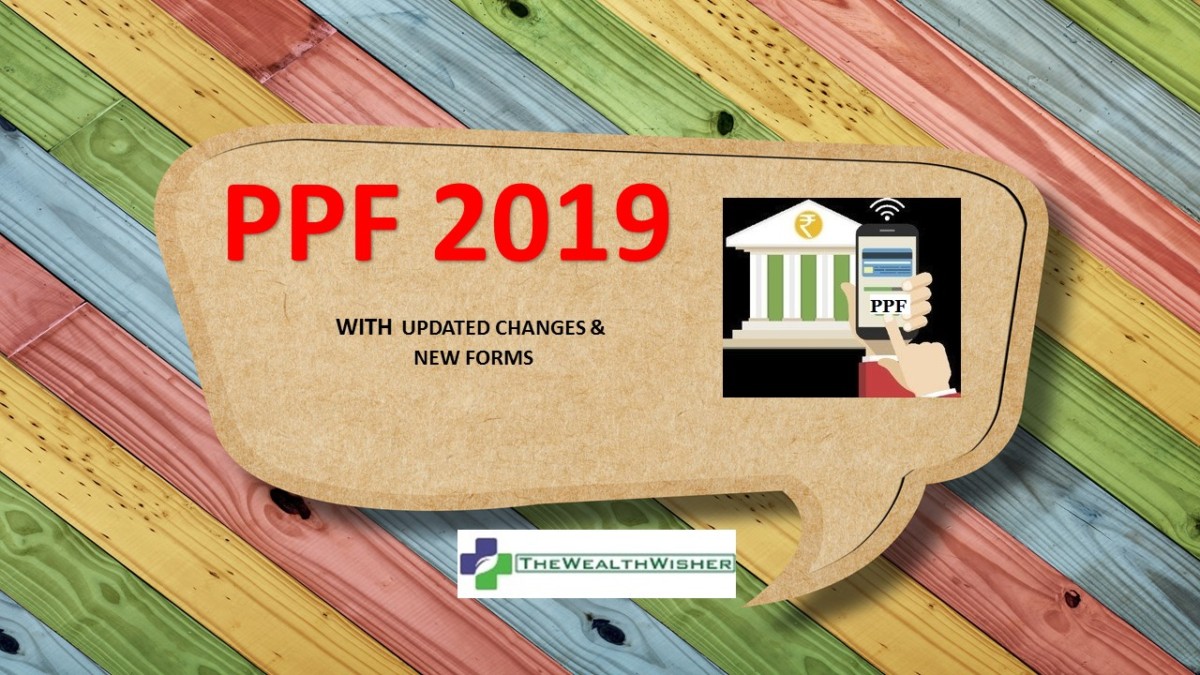Government just changed & tweaked, the norms for PPF or Public Provident Fund. These changes were made on 12 Dec 2019. Here is what changed in the New PPF 2019 guidelines. Also, download the new PPF forms. New PPF forms (1-5) are available at the last of this post.
These guidelines will be called as Public Provident Fund Scheme 2019, the new rules have replaced all previous PPF rules with immediate effect.
We have written in detail on features of PPF here. So in case you are new to investments, it would be better if you read about the product first.
Change 1 in PPF 2019
50% withdrawal after 5 years: This is a welcome change as PPF suffered liquidity issues as the product is a 15-year duration scheme. A lot changes in 15 years!
Earlier one could in a financial year, withdrawal of up to 50 percent of the balance at the end of the fourth year or at the end of the preceding year, whichever is lower, can be withdrawn. However, this withdrawal can be made seventh year onwards.
Now you can withdraw 50% of the PPF balance at the end of 5th Year.
Change 2 in PPF 2019
PPF cannot be attached or liable to attachment under any order or decree of any court in respect of any debt or liability incurred by the account holder. The benefit will first be given to dependants as nominated or as per succession laws.
Change 3 in PPF 2019
A person can open only one account as a guardian for a minor. A joint account is not allowed. Also, an account through guardian is allowed for a child of unsound mind and special abilities.
Change 4 in PPF 2019
Interest on Loan Reduced: Earlier if you took a loan against your PPF Account, you would have paid an interest rate of 2% per annum above the prevailing PPF interest rate. So, if the PPF interest rate was 8.6%, you would have to pay an interest rate of 10.6%.
PPF Scheme 2019 has reduced this rate to 1%. Hence if the PPF interest rate is 8.6%, you would have to pay a rate of 9.6% if you take a loan against PPF.
Change 5 in PPF 2019
Premature Closure of PPF account: Earlier one could close PPF account prematurely after 5 years in 2 cases. These are:
- In case of a serious ailment of the account holder or his dependents & parents.
- In case of funds required for Higher Education of the account holder.
Changes in premature closure
The above 2 reasons will continue.
In reason 2, the change is now one can close PPF account for higher studies of his family, dependents also.
The 3rd reason introduced is Change in Residency
If your residency changes to NRI, the option earlier was to maintain the account till maturity with no extension.
Now, you can close at the end of 5th year.
This will help NRIs who find it difficult to manage the account from abroad or who don’t need it. Also, it will help investors moving permanently to a foreign country.
A new form 5 has been introduced for such premature closure of the account.
Change 6 in PPF 2019
Increase in deposit multiples & frequency
Earlier one could have deposited a minimum amount of Rs 500 and in multiples of Rs 5. Now this will change to Rs 50. Thanks to inflation!
Also, earlier the maximum number of deposits was 12. Now no limit!
PPF rates for the last 15 years
(PPF Rates are changed by Government on a quarterly basis)
Change 7 in PPF 2019 (Download New PPF 2019 forms)
Changes in Forms for PPF. Download the new forms form below links.
- Account Opening Form-Form 1 (This will replace Form A)
- Contribution Form – Form 1 (Replacement of Form B)
- Partial withdrawals – Form 2 (Earlier Form C)
- Account closure after maturity: Form 3 (Earlier Form C)
- PPF Loan – Form 2 (Earlier Form D)
- Account Extension Form – Form 4 (Earlier Form H)
- Premature Closure: Form 5 (Newly Introduced)
- Nomination – Form 1 (Earlier Form E now part of form 1)
Write to us using the comments section below to share your experience & querries.








